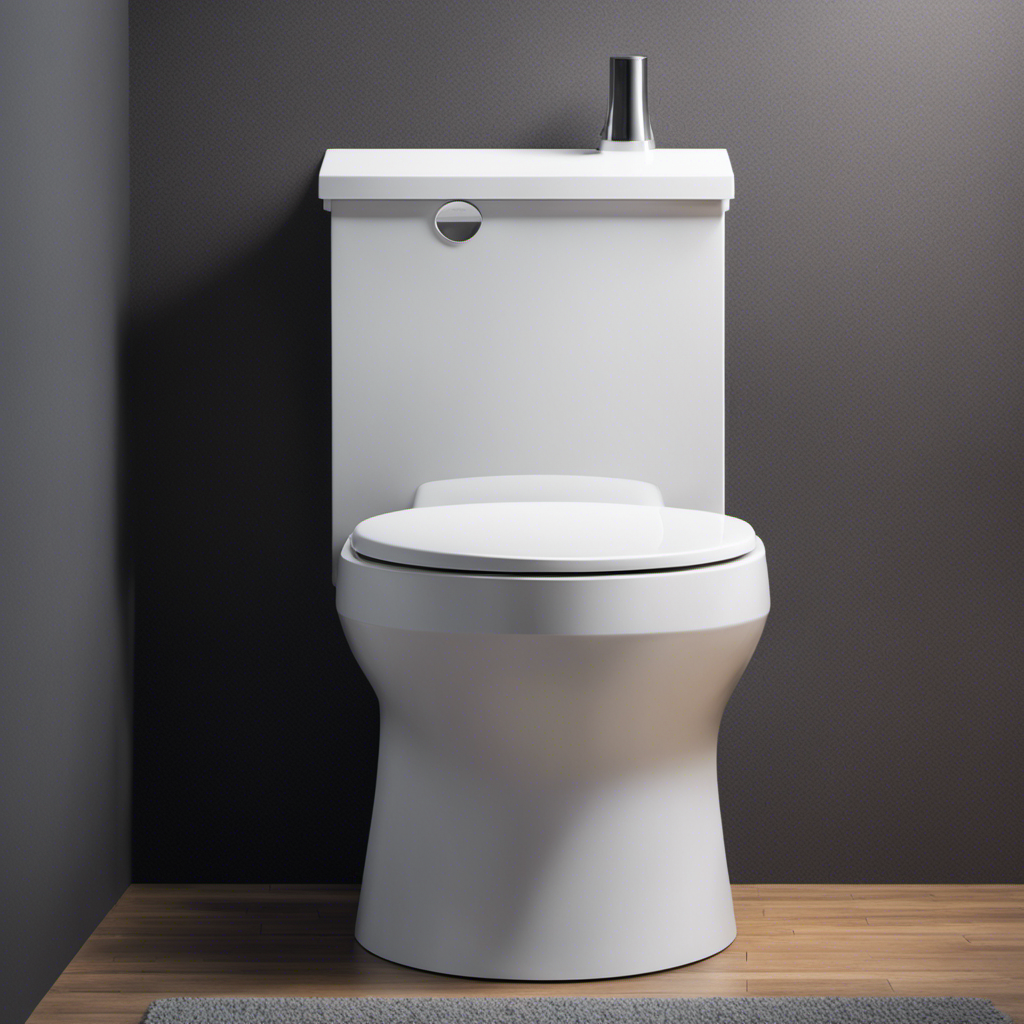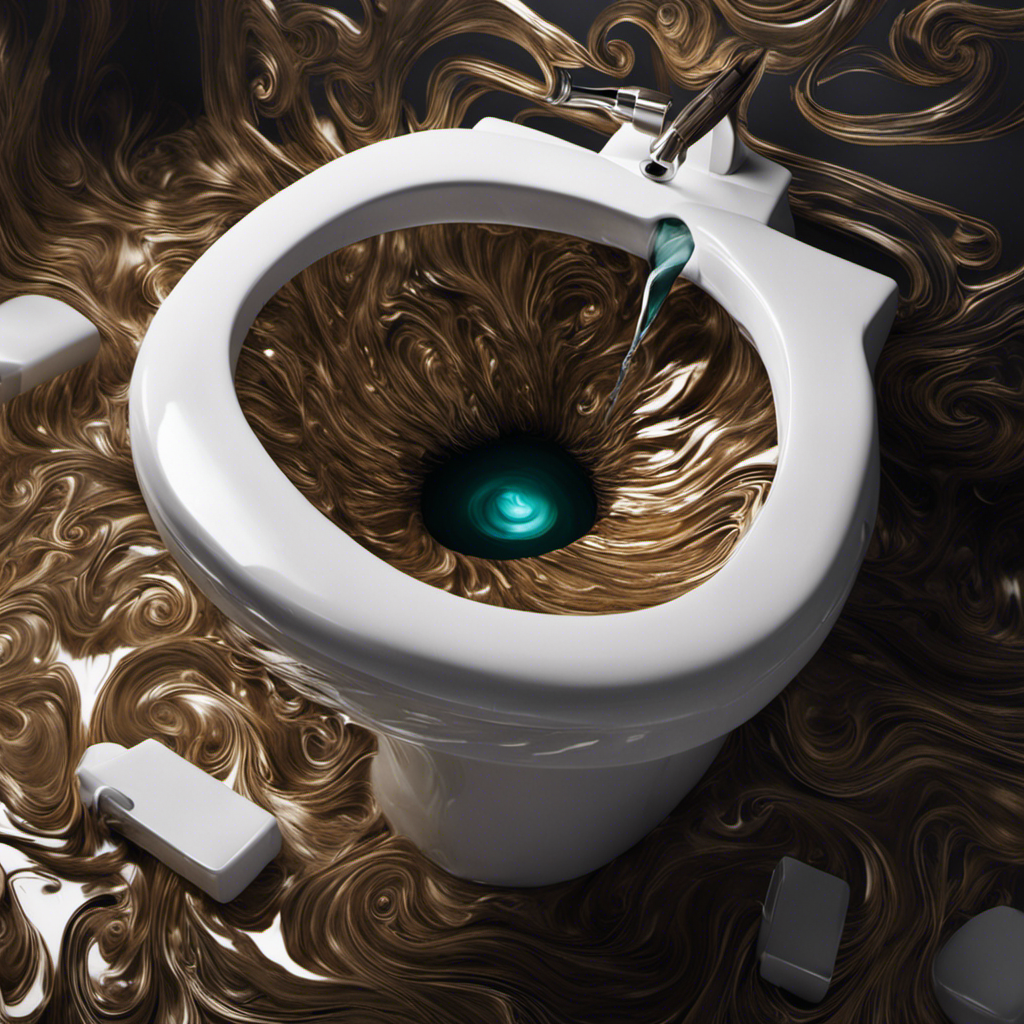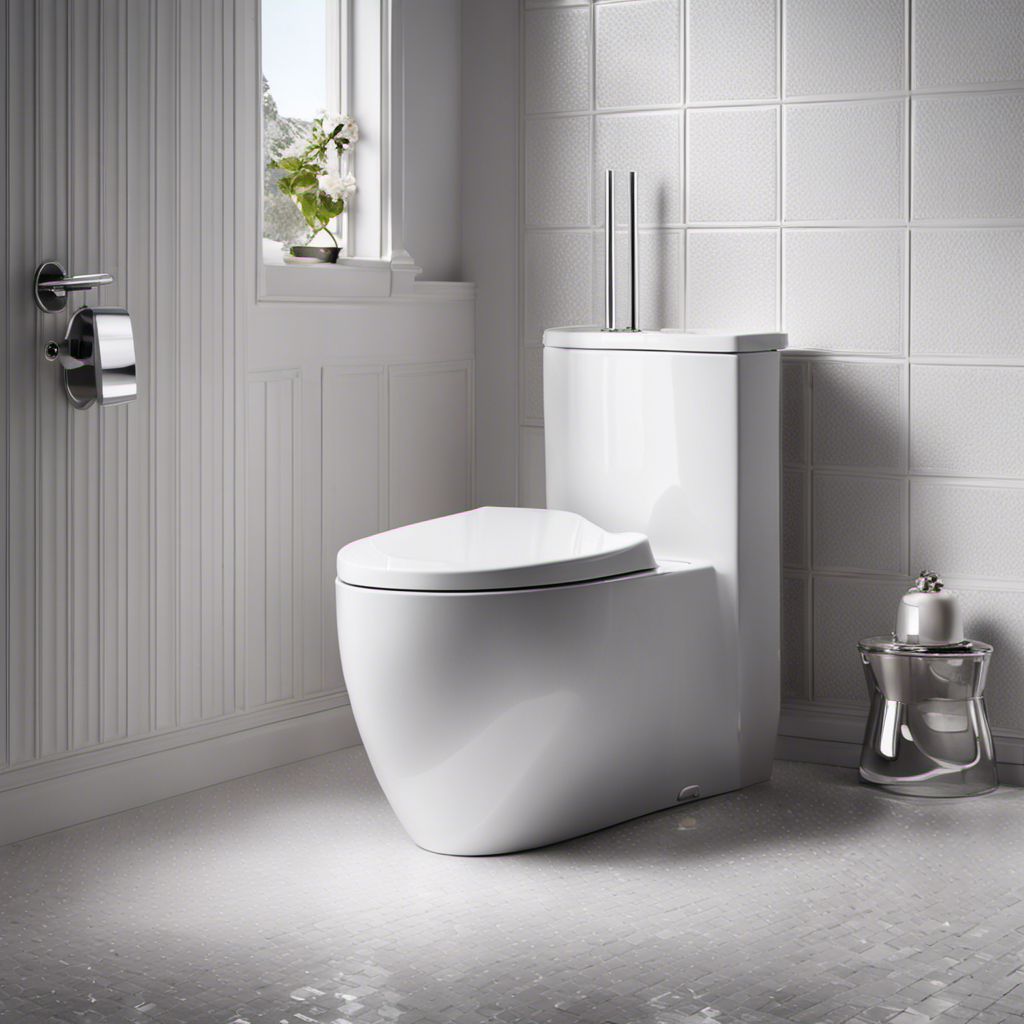As a homeowner, I know how frustrating it can be to discover a leaking toilet tank. Did you know that a leaking toilet can waste up to 200 gallons of water per day? That’s a staggering amount!
In this article, I will share with you the possible causes of a leaking toilet tank, signs to watch out for, and steps to identify the source of the leak. I’ll also provide you with some DIY solutions to fix the issue, and when it’s time to call in a professional.
Let’s dive in and tackle this problem head-on!
Key Takeaways
- Regular inspection and maintenance of the toilet tank is crucial in preventing leaks.
- Visible water pooling around the base of the toilet after flushing is a sign of a leaking toilet tank.
- The source of the leak can be identified by inspecting the area around the base of the toilet for water pooling and water damage.
- DIY solutions for fixing a leaking toilet tank include tightening bolts, using gaskets and seals, and checking and replacing faulty valves.
Possible Causes of a Leaking Toilet Tank
One of the possible causes of a leaking toilet tank is a cracked or damaged toilet tank. When the tank is cracked, water can seep through the cracks and leak onto the floor. This is one of the common toilet problems that homeowners face.
Toilet tanks can become cracked due to age, wear and tear, or even accidental impacts. To prevent toilet leaks caused by a cracked or damaged tank, it is important to regularly inspect the tank for any signs of cracks or damage. If any cracks or damage are found, it is best to replace the tank before it leads to a major leak.
Additionally, avoiding placing heavy objects on or around the toilet tank can help prevent accidental damage. Regular maintenance and care are crucial in preventing toilet leaks.
Signs of a Leaking Toilet Tank
Check for any visible water pooling around the base of the toilet after you flush. This is one of the common signs of a leaking toilet tank. If you notice water around the base, it could indicate a problem with the tank or the seal between the tank and the bowl.
To prevent toilet tank leaks, here are four things you can do:
- Regularly inspect the tank for any cracks or damage.
- Check the flush valve and flapper for proper function and replace them if necessary.
- Ensure that the tank bolts and washers are tight and secure.
- Use a tank liner to protect the tank from corrosion.
By following these preventive measures, you can minimize the risk of toilet tank leaks and avoid costly repairs.
Now, let’s move on to the next section where we will discuss the steps to identify the source of the leak.
Steps to Identify the Source of the Leak
Inspect the area around the base of the toilet for any visible signs of water pooling after you flush, as this can help you identify the source of the leak. Identifying water damage is crucial in determining the cause of a leaking toilet tank. There are several common toilet tank problems that may lead to leaks, such as a faulty flapper valve, loose tank bolts, or a cracked tank. To assist in diagnosing the issue, here is a table summarizing the potential causes and corresponding signs of each problem:
| Problem | Signs of Water Damage |
|---|---|
| Faulty flapper | Continuous water running in bowl |
| Loose tank bolts | Water pooling around base |
| Cracked tank | Water dripping from tank |
| Faulty gasket | Water seeping between tank |
DIY Solutions for Fixing a Leaking Toilet Tank
If you’re experiencing a leak, one possible solution is to tighten the bolts connecting the tank to the bowl. This is a common DIY mistake that many people overlook. However, before you start tightening bolts, it’s important to have the right tools and products for the job.
Here are four toilet tank repair products that can help you fix a leaking toilet tank:
-
Tank-to-Bowl Gasket: This rubber gasket creates a watertight seal between the tank and bowl, preventing leaks.
-
Flush Valve Seal: This seal sits at the bottom of the tank and prevents water from leaking into the bowl when the toilet is not in use.
-
Fill Valve: This valve controls the water supply to the tank. If it’s faulty, it can cause leaks.
-
Bolts and Washers: These are used to secure the tank to the bowl. If they’re loose or damaged, they can cause leaks.
When to Call a Professional for Toilet Tank Leaks
When you’re unsure about how to fix a leak in your toilet tank, it may be time to call a professional plumber. While DIY solutions can be cost-effective, there are instances when the expertise of a trained plumber is necessary.
Regular toilet maintenance is important to prevent leaks and other issues from occurring. Neglecting maintenance can lead to costly repairs in the future. Additionally, attempting DIY toilet repairs without proper knowledge and tools can result in common mistakes that may worsen the problem.
It’s crucial to avoid using excessive force when tightening bolts or using inappropriate materials for repairs. A professional plumber can accurately diagnose the issue, provide efficient repairs, and offer advice on how to prevent future leaks.
Frequently Asked Questions
How Much Does It Cost to Repair a Leaking Toilet Tank?
Toilet tank repair costs can vary depending on the cause of the leak. Common causes of toilet tank leaks include worn-out gaskets or faulty fill valves. It’s important to address the issue promptly to prevent further damage and water wastage.
Can a Leaking Toilet Tank Lead to Water Damage in the Bathroom?
Leaking toilet tanks can cause significant water damage in the bathroom. To prevent this, address potential causes like worn gaskets or loose connections. Look for common signs such as stains, mold, or warped flooring.
Is It Normal for a Toilet Tank to Leak After It Has Been Flushed?
It is not normal for a toilet tank to leak after being flushed. Common causes of such leaks include faulty flapper valves or loose tank bolts. To prevent these leaks, regularly check and replace worn-out parts.
Can a Leaking Toilet Tank Cause an Increase in Water Bills?
A leaking toilet tank can cause a significant increase in water bills and can hinder water conservation efforts. However, in some cases, it may be possible to fix a leaking toilet tank without professional help.
What Should I Do if I Notice a Small Leak in My Toilet Tank?
If I notice a small leak in my toilet tank, I should take immediate action to prevent further damage. Toilet tank repair can be done by identifying the source of the leak and fixing it accordingly. Knowing how to fix a leaking toilet tank is essential for maintaining a functional bathroom.
Conclusion
In conclusion, a leaking toilet tank can be a frustrating issue to deal with. It’s important to identify the source of the leak and take appropriate action to fix it.
Whether it’s a faulty valve, loose connections, or a cracked tank, addressing the problem promptly is crucial to prevent further damage. Just like a leaky faucet can drip away your money, a leaking toilet tank can slowly drain your resources.
Take control of the situation and don’t hesitate to seek professional help if needed.










